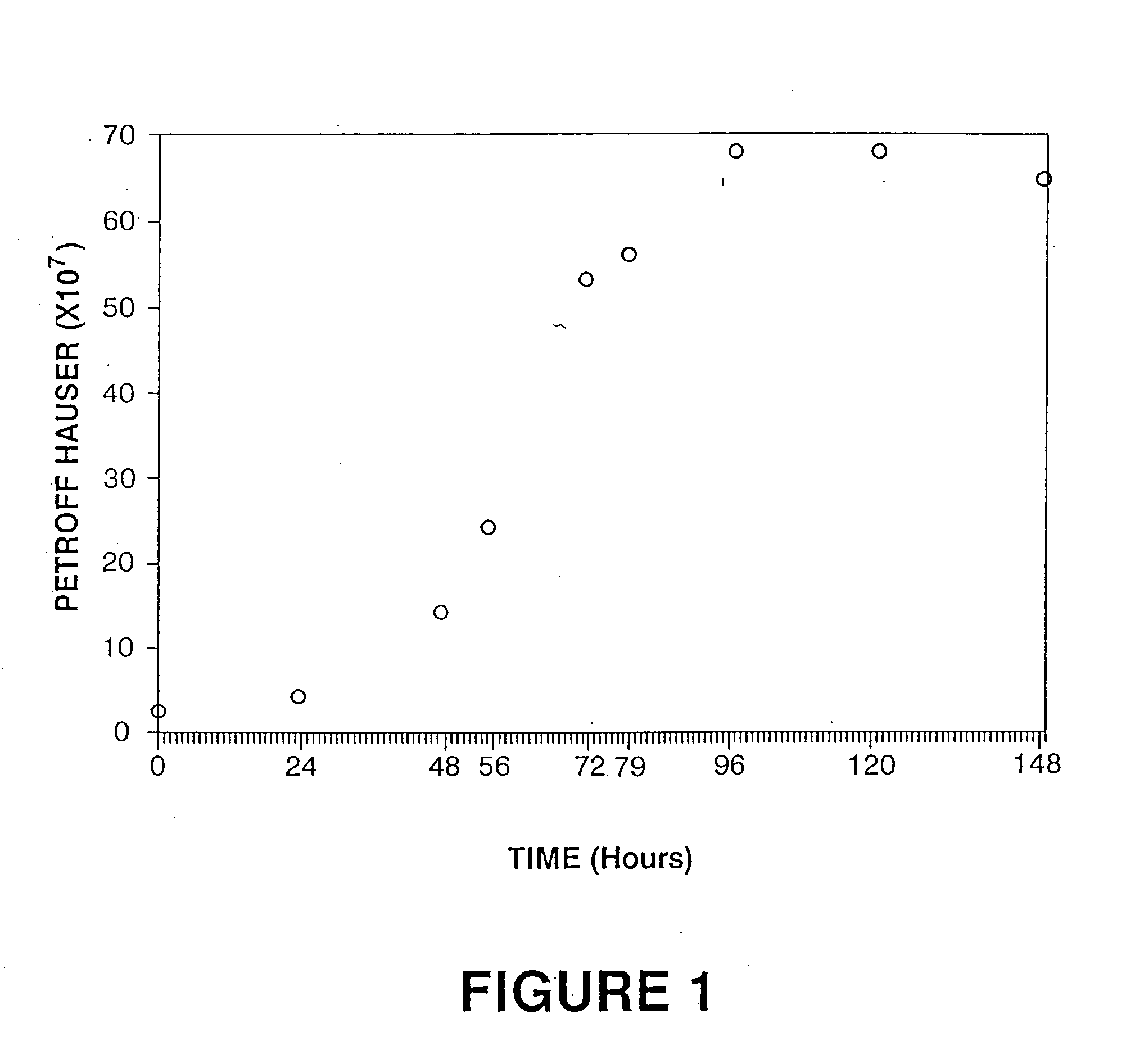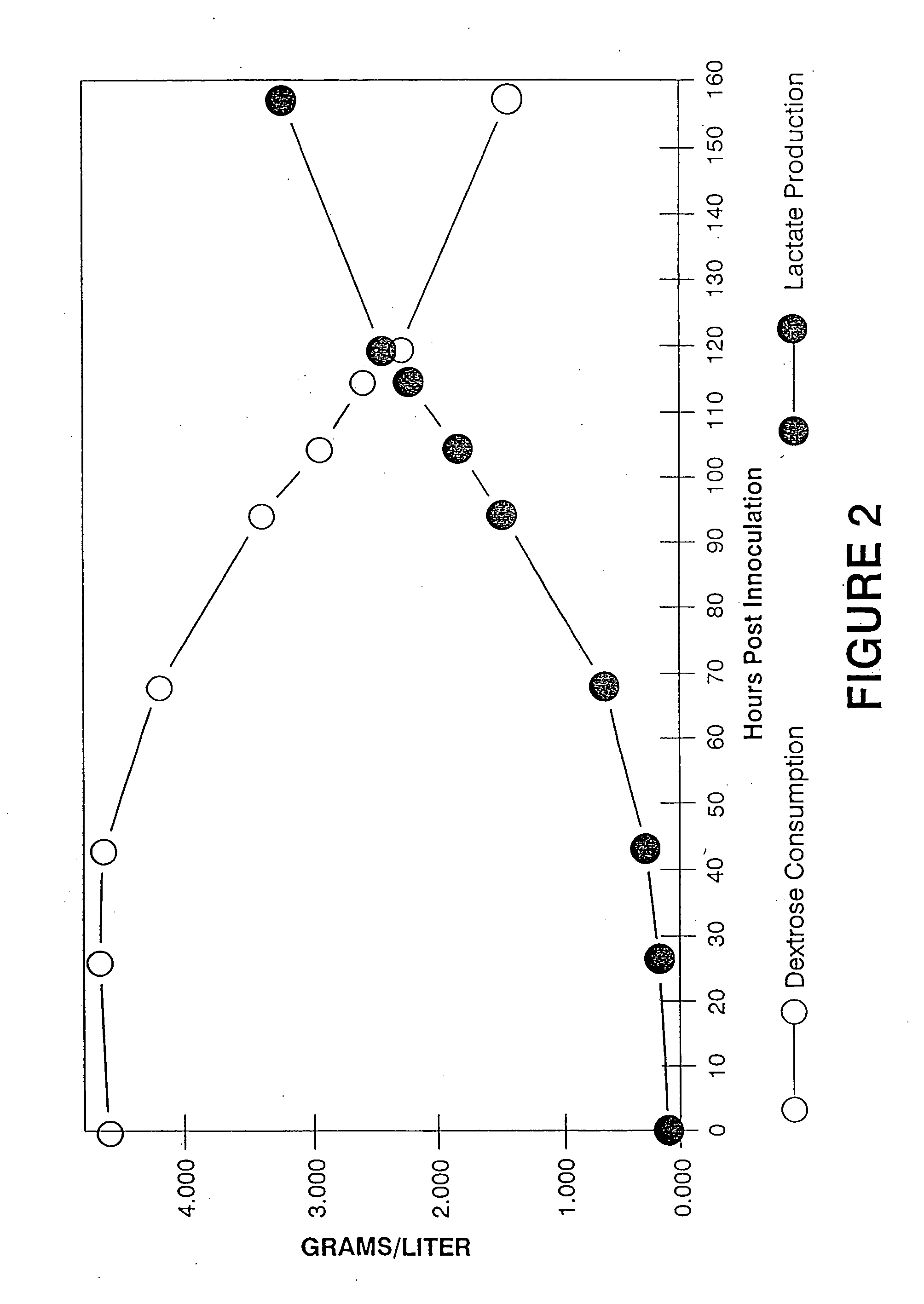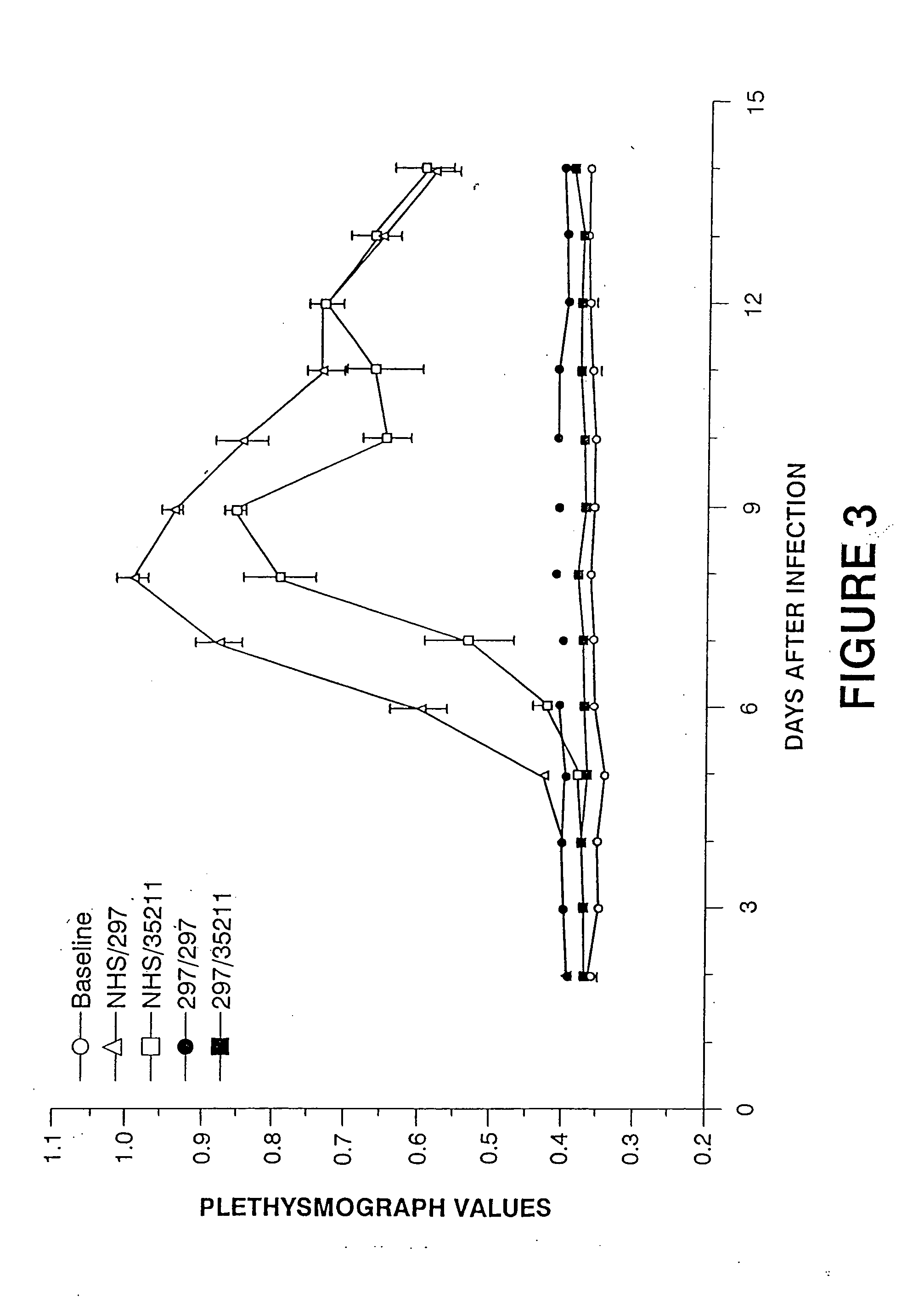Borrelia burgdorferi bacterin
a bacterin and borrelia technology, applied in the field of borrelia burgdorferi bacterin, can solve the problems of affecting the immunogenicity of borrelia burgdorferi, and affecting the establishment of effective chemical treatment protocols for lyme disease, so as to enhance the immunogenicity of inactivated borrelia burgdorferi
- Summary
- Abstract
- Description
- Claims
- Application Information
AI Technical Summary
Benefits of technology
Problems solved by technology
Method used
Image
Examples
example 1
Preparation of Borrelia Burgdorferi Bacterin
Equipment Needed:
Sterile: 20 ml tubes, 250 ml bottles and 10 liter jugs; 200, 500 or 3,000 liter fermenter; serological pipets; magnets; mixing and storage tanks; and centrifuge.
Nonsterile: magnetic stirring motors; pipet aids; peristaltic pumps; tubing and tubing clamps; Petroff / Hauser counting chamber; darkfield microscope; coveralls, gloves, hats, masks, shoe covers and face shields; micropipet and micropipet tips; saline solution blanks.
Microorganisms used: Two isolates of Borrelia burgdorferi are used in the preparation of the product, B. burgdorferi isolates C-1-11 and S-1-10 obtained from Dr. Steven M. Callister, Gundersen Medical Foundation, La Crosse, Wis. The bacterin will contain adjusted counts of each Borrelia isolate culture to satisfy potency standard requirements.
Identity of each microorganism and frequency of methods of identification: Identification is made on the basis of morphological and serological characte...
example 2
Preparation of the Product:
Method of inactivation: The production growth is inactivated with binary ethyleneimine (BEI). Inactivation is conducted at 32° C.±2° C. The appropriate amount of BEI is prepared as a 0.344 M (7.05%) solution. A 7.05% BEI solution is prepared by dissolving 70.48 grams of 2-bromoethylamine hydrobromide (molecular weight 204.89) and 8.00 grams NaOH (MW 40.00) in one liter of deionized water. The dissolved solution is incubated at 37° C. for two hours and then added to the culture at 30 ml per liter under constant agitation (slow stirring). The inactivation is conducted for no less than 24 hours at a pH of 7.3±0.2 with agitation (slow stirring). Upon completion of inactivation, the BEI is neutralized by the addition of sterile sodium thiosulfate. The appropriate amount of sterile sodium thiosulfate solution is prepared as a 3.015 M (47.7%) solution by dissolving 477.0 grams sodium thiosulfate in one liter of deionized water. This solution is filtered throug...
example 3
Testing of the Bacterin
Purity: Each serial or subserial is tested for bacteria and fungi in accordance with 9 C.F.R. §113.26.
Safety: Safety testing is conducted on bulk or final containers in accordance with 9 C.F.R. §§ 113.38 and 113.40 wherein a dog saftey test is conducted using a 2× (2 cc) dose given by IM injection.
Potency: Potency testing is conducted on assembled bulk dr final containers. Potency testing is conducted using an antigen capture ELISA. Satisfactory serials must have a relative potency of ≧1.0 as determine by the U.S. Department of Agriculture, Veterniary Biologics Program's Relative Potency Calculations Software, Version 3.0.
PUM
| Property | Measurement | Unit |
|---|---|---|
| Time | aaaaa | aaaaa |
| Time | aaaaa | aaaaa |
| Time | aaaaa | aaaaa |
Abstract
Description
Claims
Application Information
 Login to View More
Login to View More - R&D
- Intellectual Property
- Life Sciences
- Materials
- Tech Scout
- Unparalleled Data Quality
- Higher Quality Content
- 60% Fewer Hallucinations
Browse by: Latest US Patents, China's latest patents, Technical Efficacy Thesaurus, Application Domain, Technology Topic, Popular Technical Reports.
© 2025 PatSnap. All rights reserved.Legal|Privacy policy|Modern Slavery Act Transparency Statement|Sitemap|About US| Contact US: help@patsnap.com



